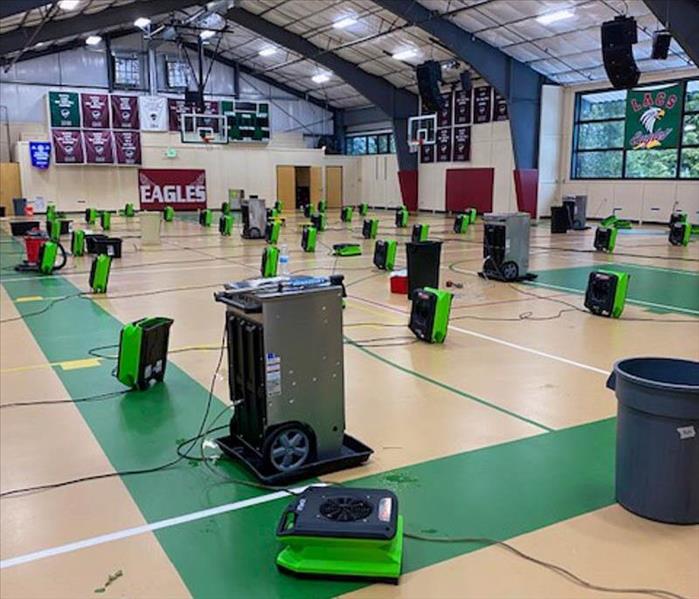Drying Techniques Used During Water Damage Mitigation
10/10/2023 (Permalink)
 Understanding the drying techniques and equipment used is essential for efficient and thorough recovery.
Understanding the drying techniques and equipment used is essential for efficient and thorough recovery.
When it comes to water damage restoration, understanding the drying techniques and equipment used is essential for efficient and thorough recovery. In this blog, we'll delve into the world of drying techniques, including the use of air movers, dehumidifiers, and more, to help you better protect your home and property.
Air Movers
Air movers, also known as industrial fans or blowers, are a crucial tool in the water damage restoration process. These powerful devices generate high-velocity airflow, which helps accelerate the drying of wet surfaces. Here’s why air movers are a standard go-to in the industry:
Even Air Distribution: Properly positioned air movers ensure even air distribution, preventing pockets of moisture from lingering in your home.
Speedy Drying: The continuous flow of air helps evaporate moisture from various surfaces, including walls, carpets, and hardwood floors.
Preventing Mold Growth: Timely use of air movers reduces the risk of mold growth, which can be a common consequence of water damage.
Dehumidifiers
Dehumidifiers play a vital role in maintaining the moisture balance within your home. Here's why they are indispensable in water damage restoration:
Humidity Control: Dehumidifiers remove excess moisture from the air, preventing condensation on surfaces and further damage.
Efficient Drying: Pairing dehumidifiers with air movers accelerates the drying process, ensuring thorough and efficient results.
Improved Indoor Air Quality: Dehumidifiers help maintain a healthy indoor environment by reducing humidity levels, discouraging mold growth, and preventing musty odors.
Moisture Meters
Professionals use moisture meters to measure the moisture content of various materials. This allows them to:
Identify Hidden Moisture: Moisture meters can pinpoint areas with hidden moisture, ensuring that no wet spots are left untreated.
Monitor Progress: Regular measurements with moisture meters help track the drying progress, ensuring that your property is fully restored.
Precision Drying: Moisture meters enable professionals to tailor drying techniques to specific materials, preventing over-drying or under-drying.
Infrared Cameras
Infrared cameras help professionals visualize temperature variations, making them valuable tools in water damage restoration:
Detect Hidden Moisture: Infrared cameras can identify areas with temperature anomalies, indicating the presence of hidden moisture.
Efficient Assessment: These cameras enable professionals to assess the extent of water damage quickly and accurately, leading to faster response times.
Minimize Disruption: By pinpointing problem areas with precision, infrared cameras minimize the need for unnecessary demolition and repair.
Understanding the importance of drying techniques, including air movers, dehumidifiers, moisture meters, and infrared cameras, is essential when facing water damage in your home. Timely and efficient drying is the key to preventing further damage and the growth of mold and mildew. If your property experiences water damage, don't hesitate to contact SERVPRO® for professional assistance. Our team is dedicated to helping our community recover from water damage efficiently and effectively, ensuring that your home is restored to its pre-damage condition.






 24/7 Emergency Service
24/7 Emergency Service